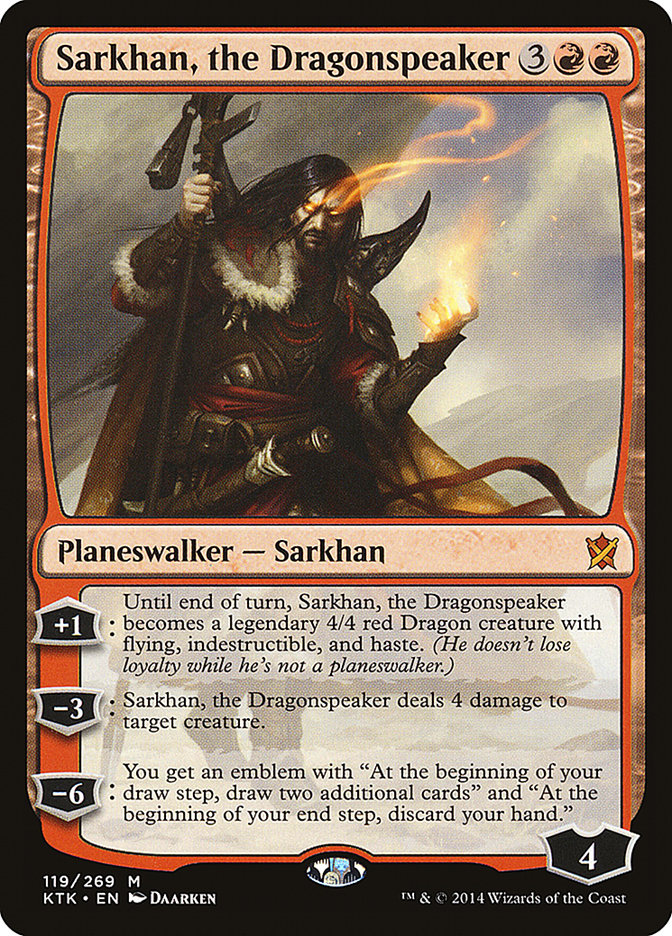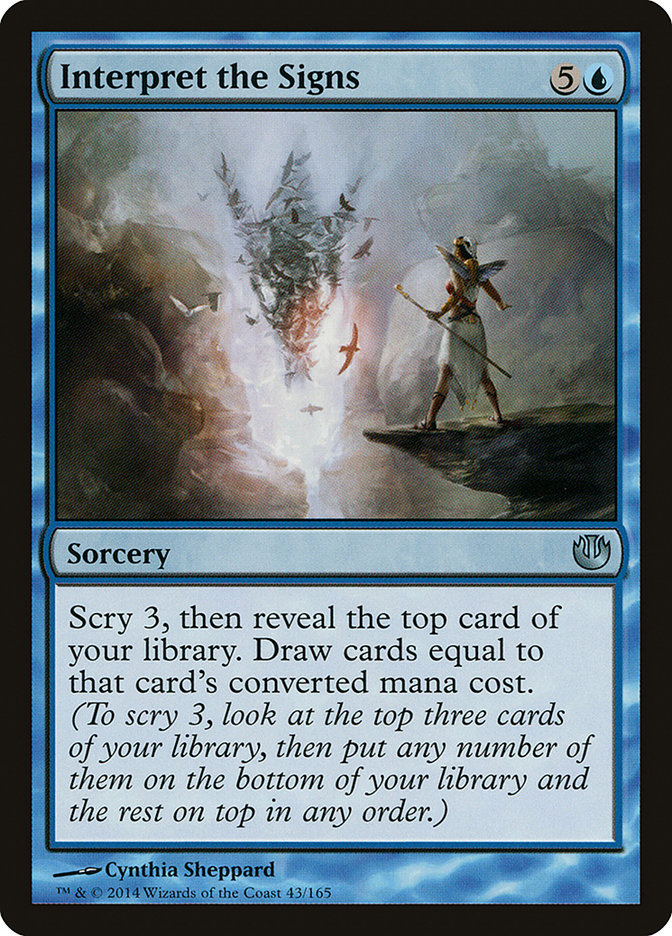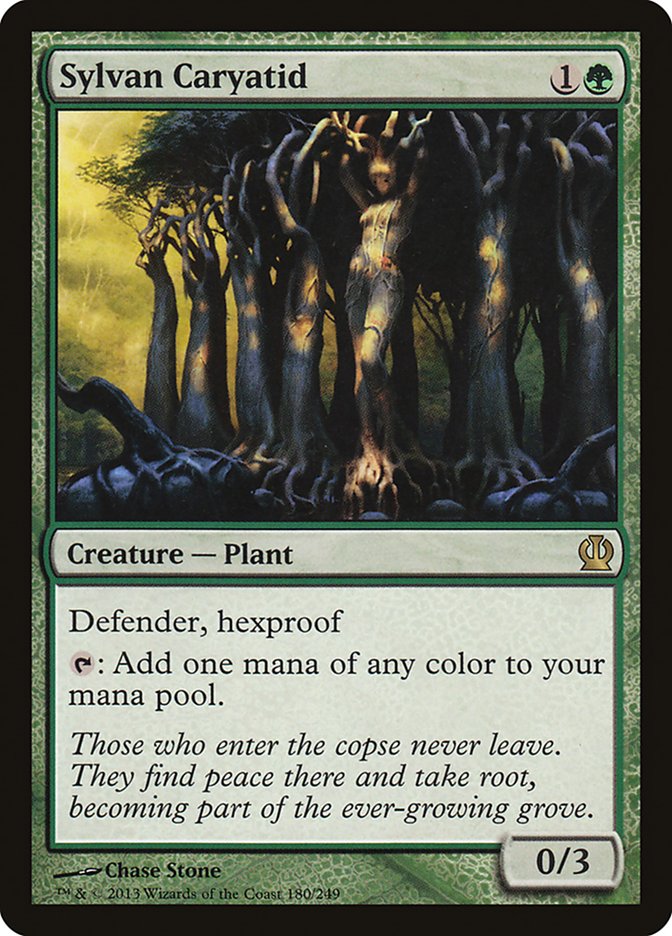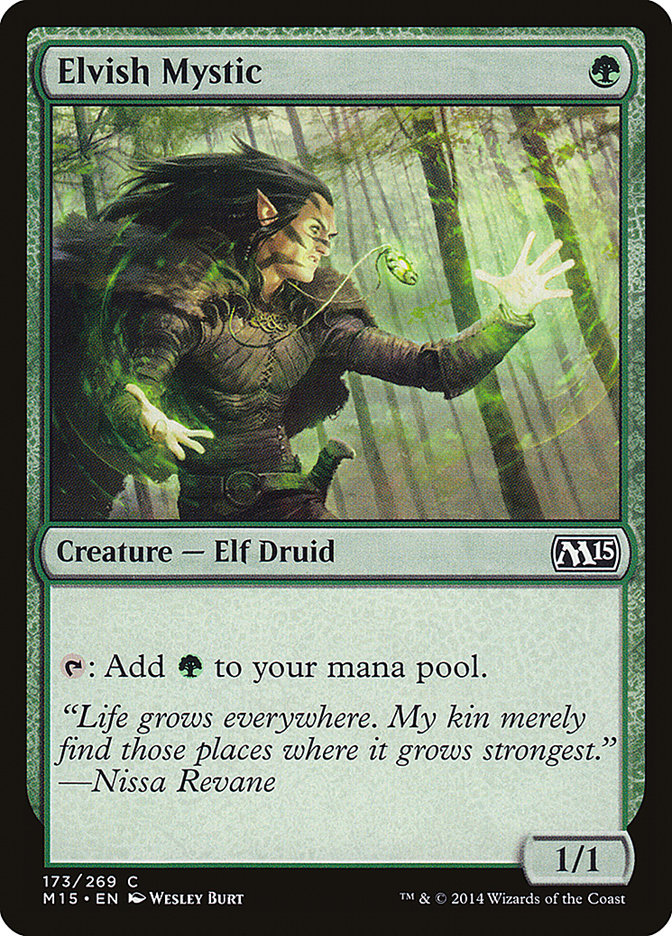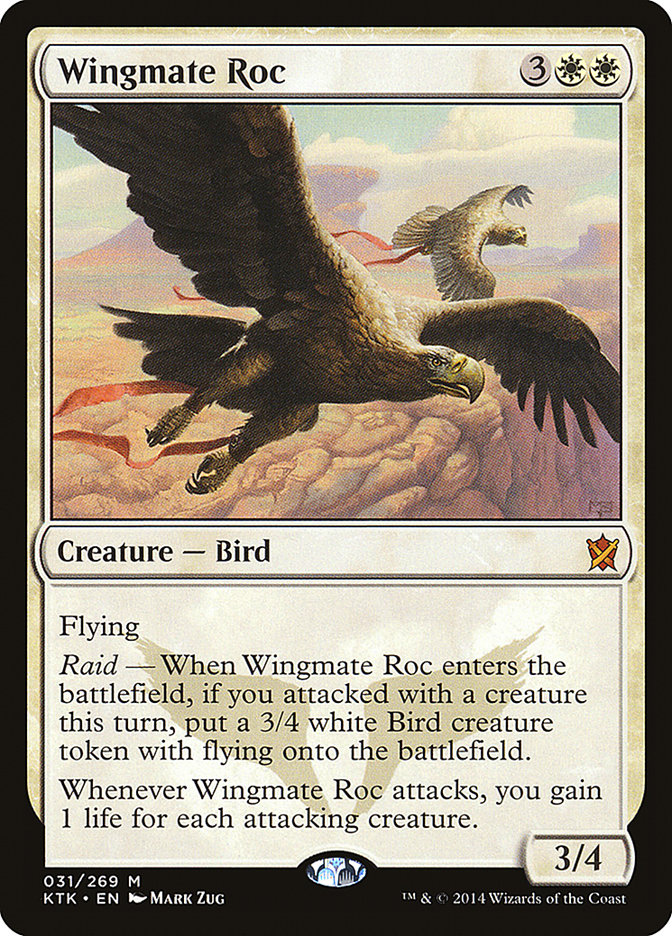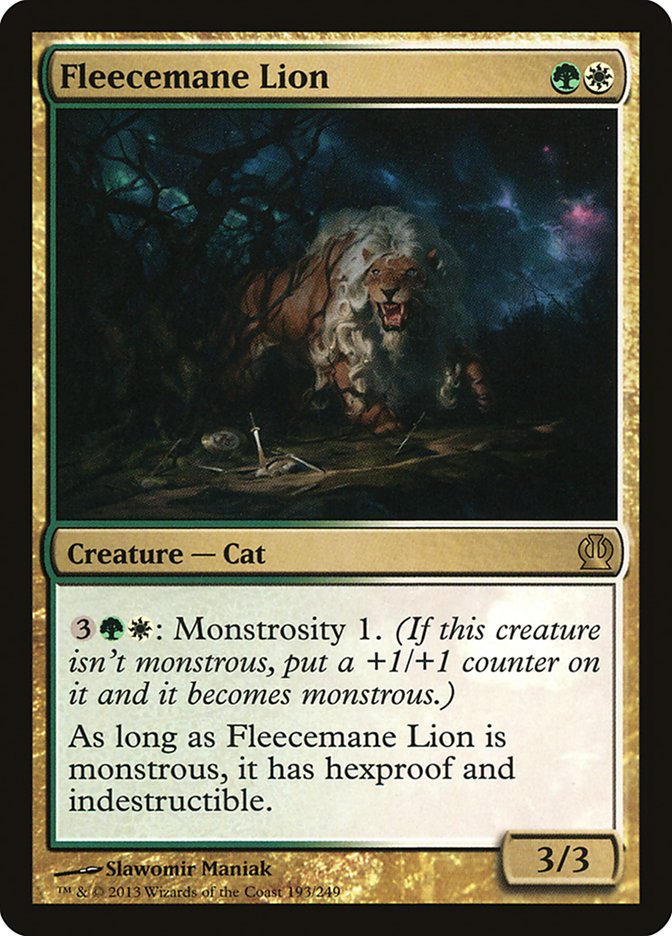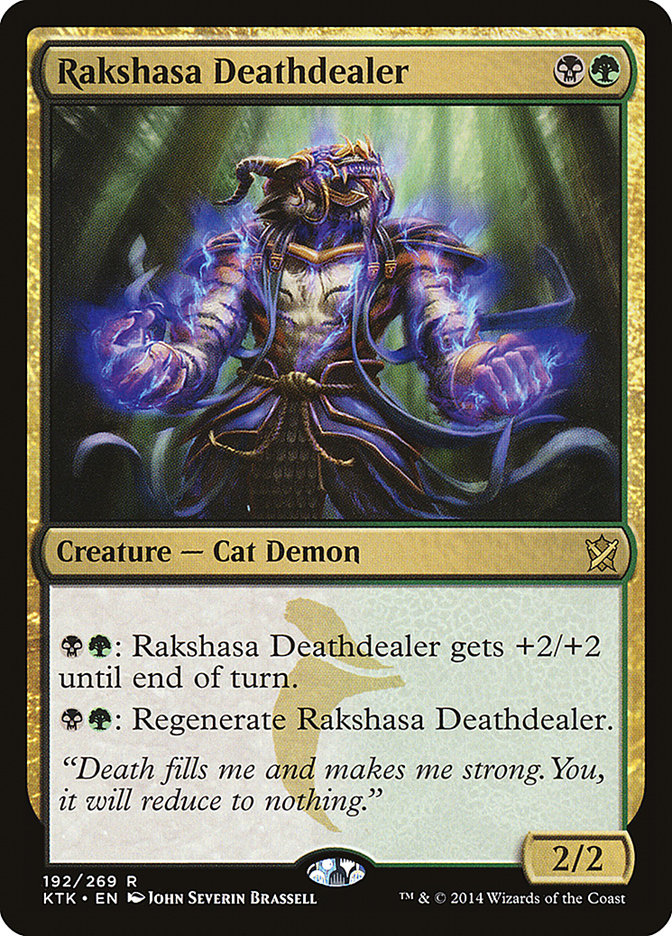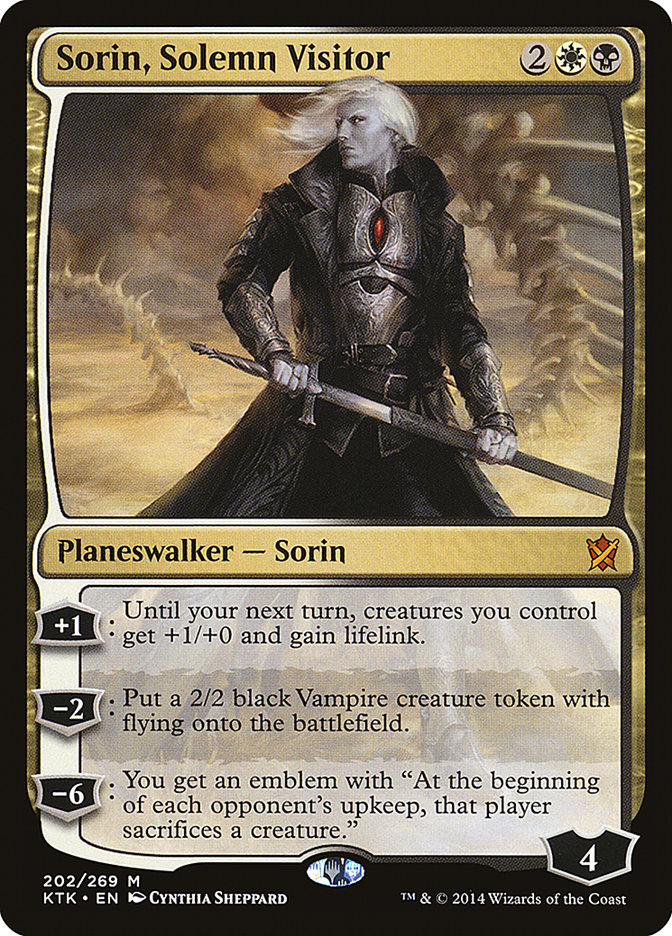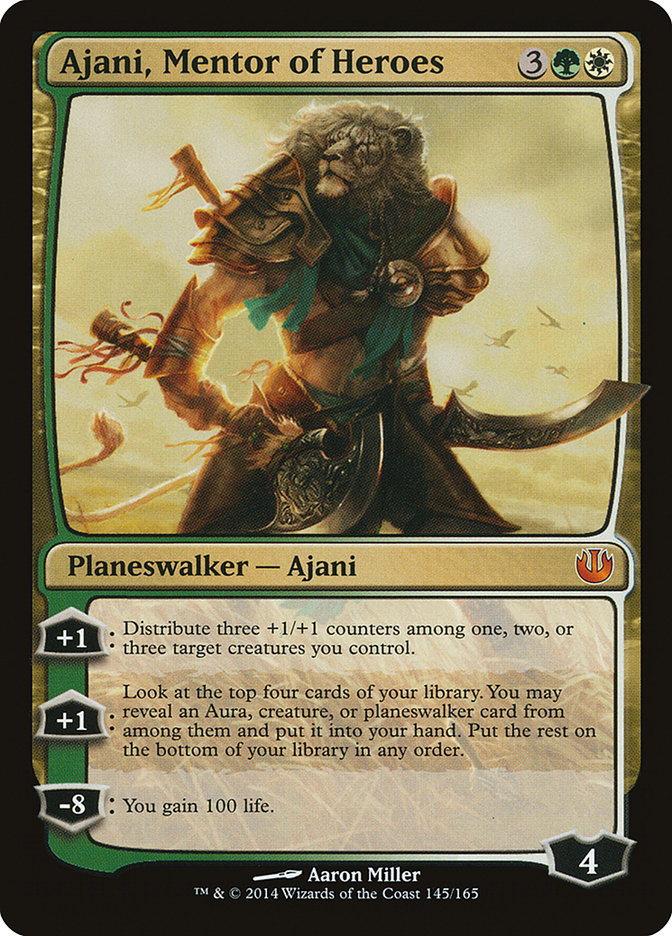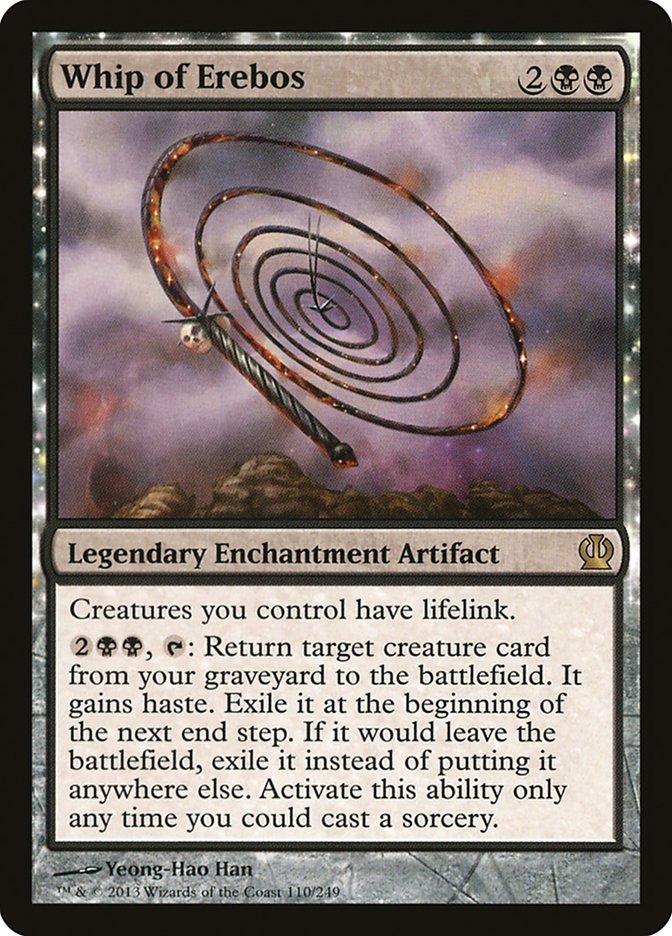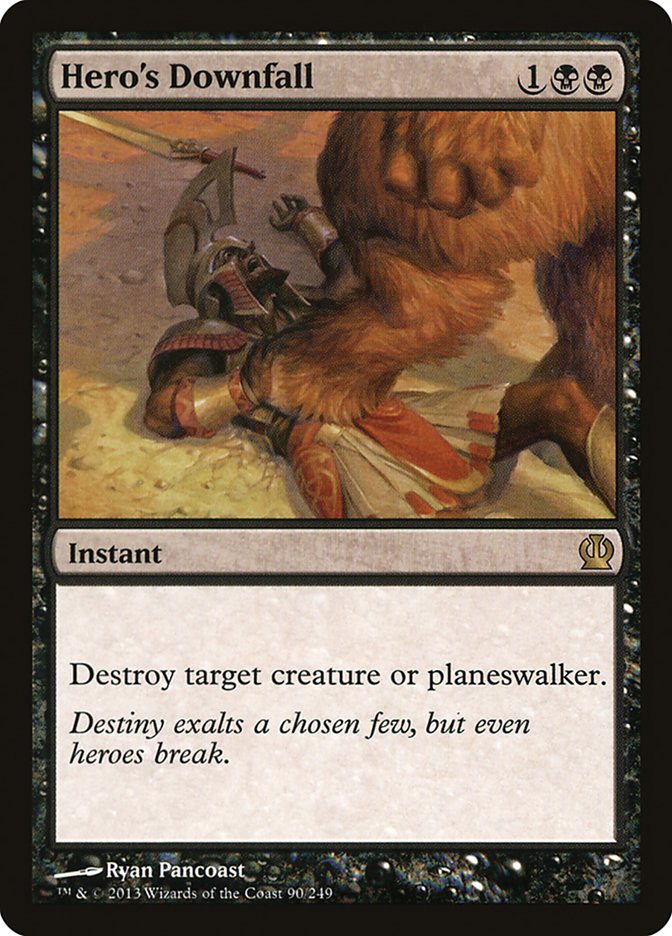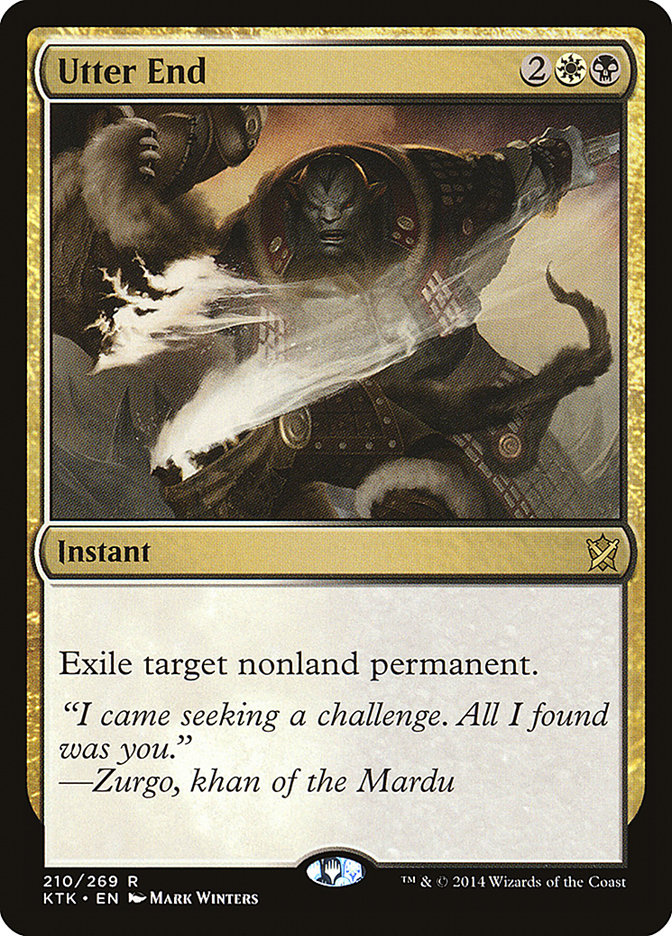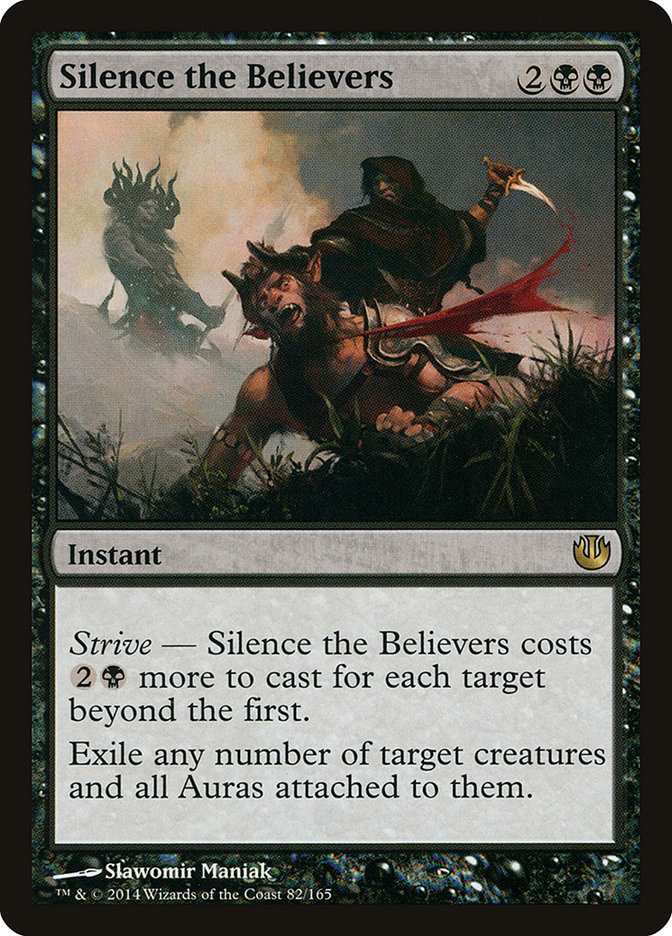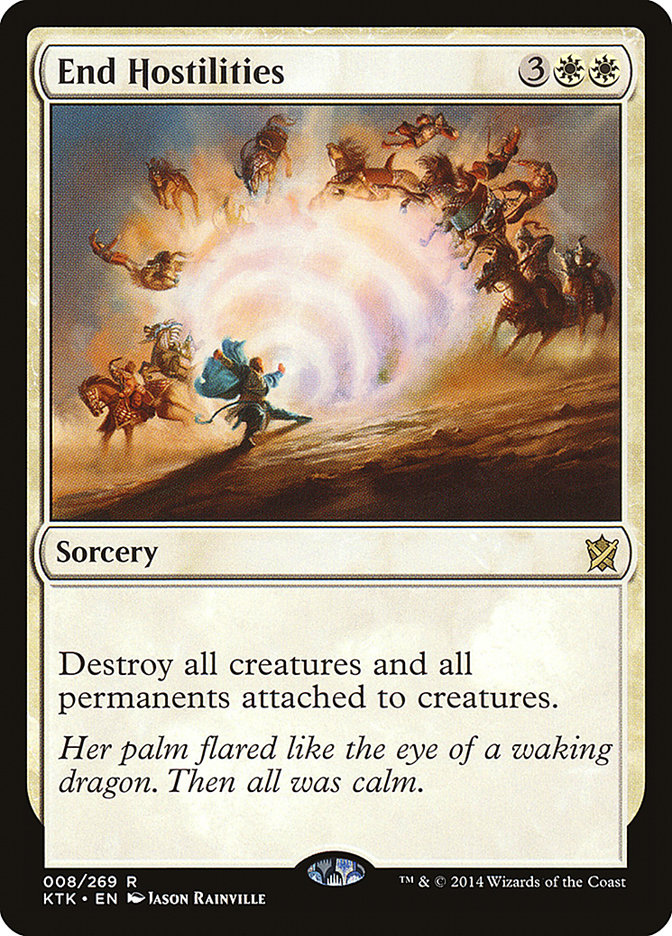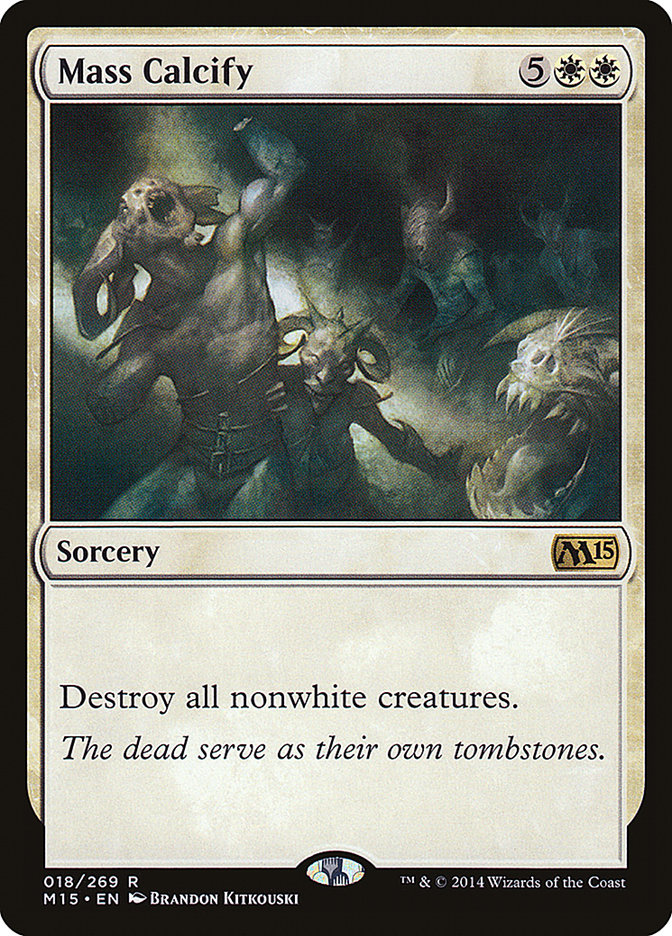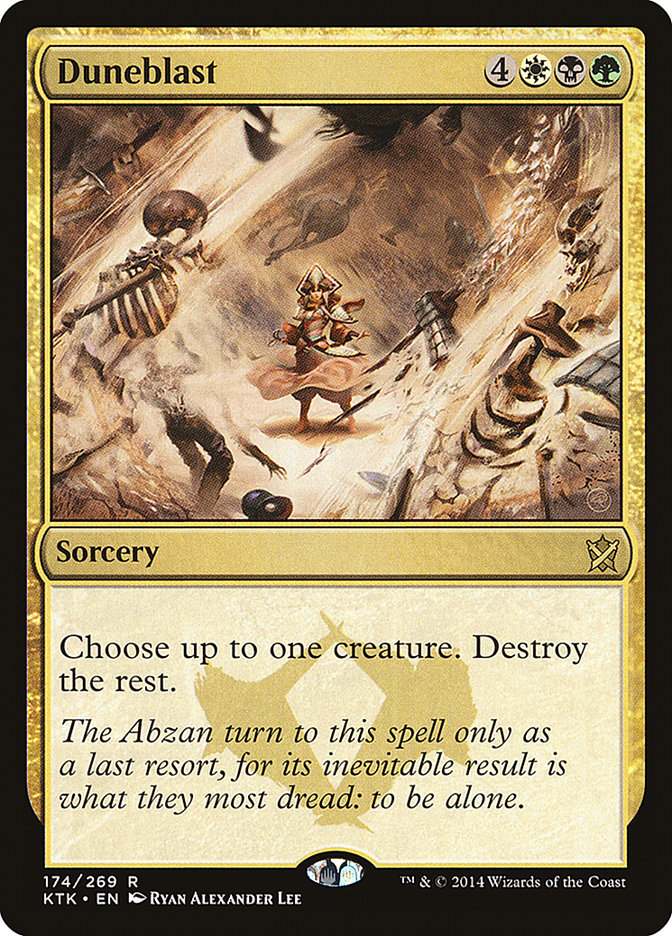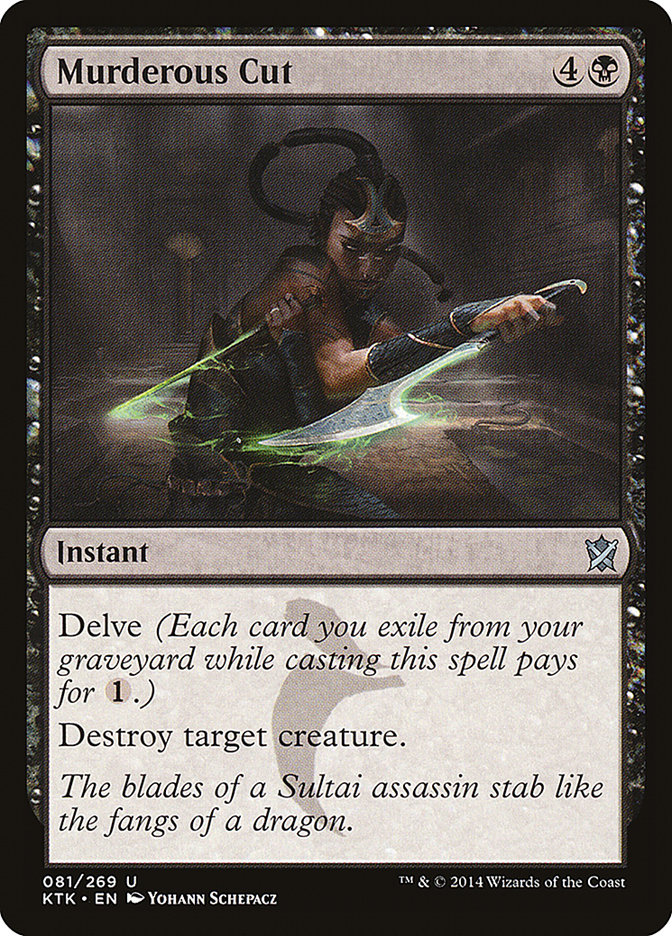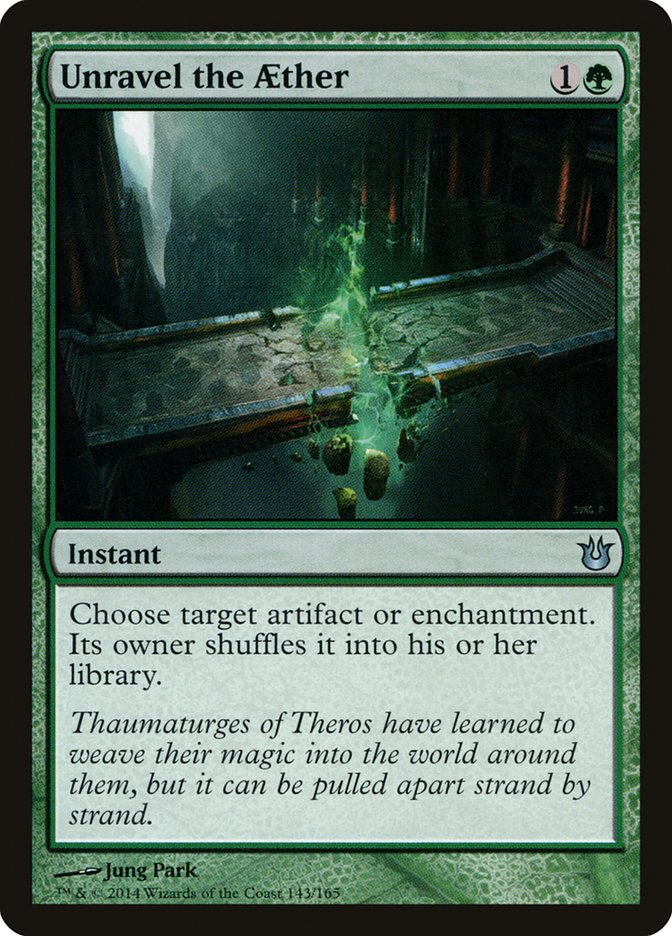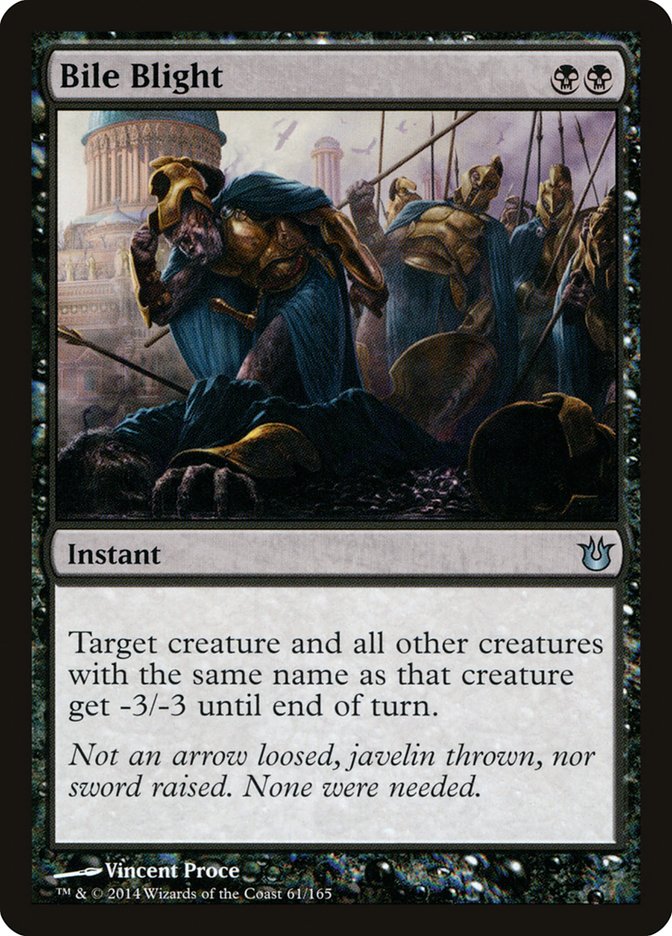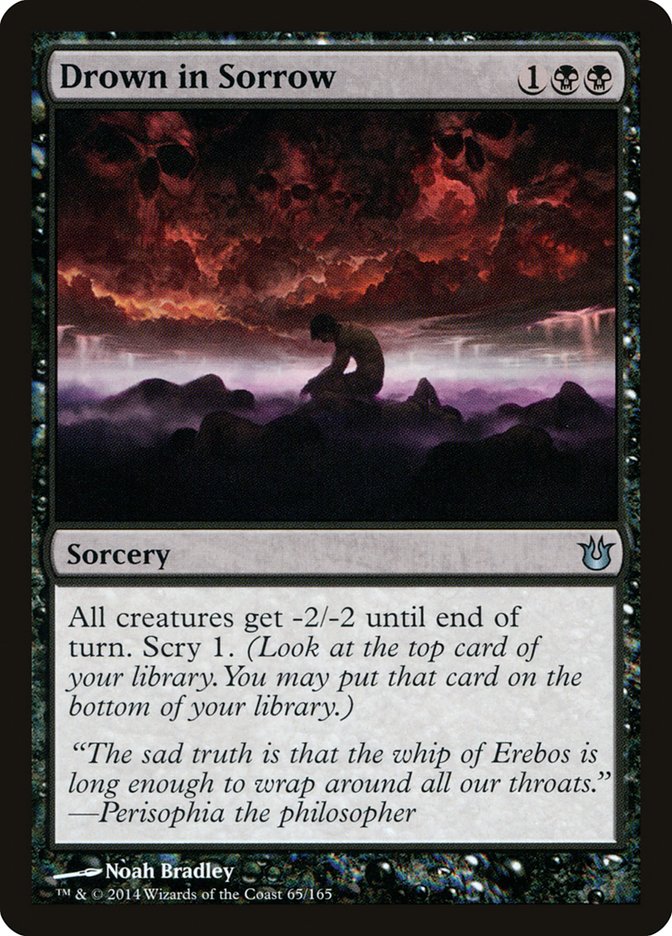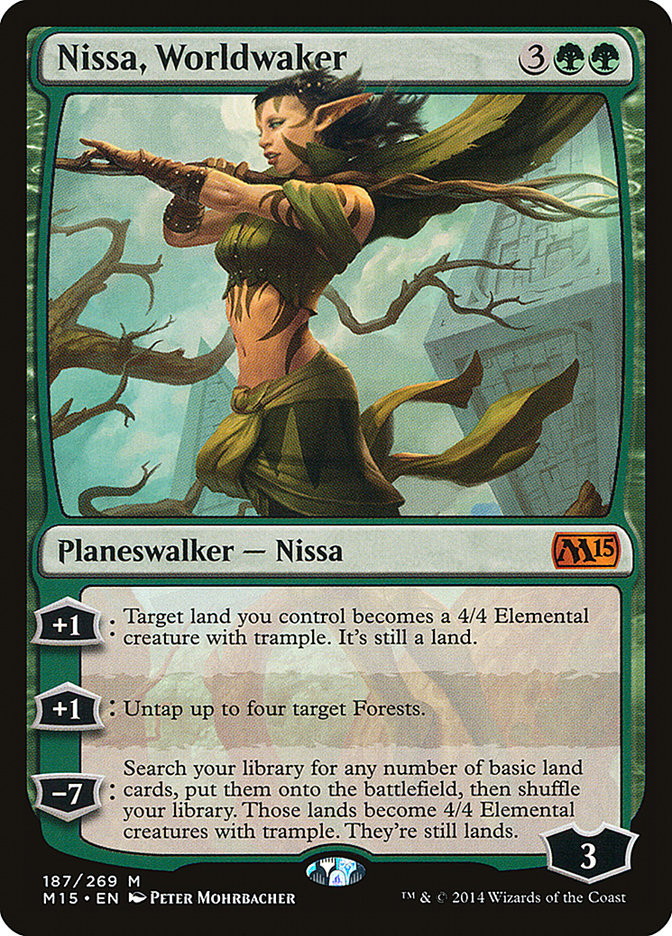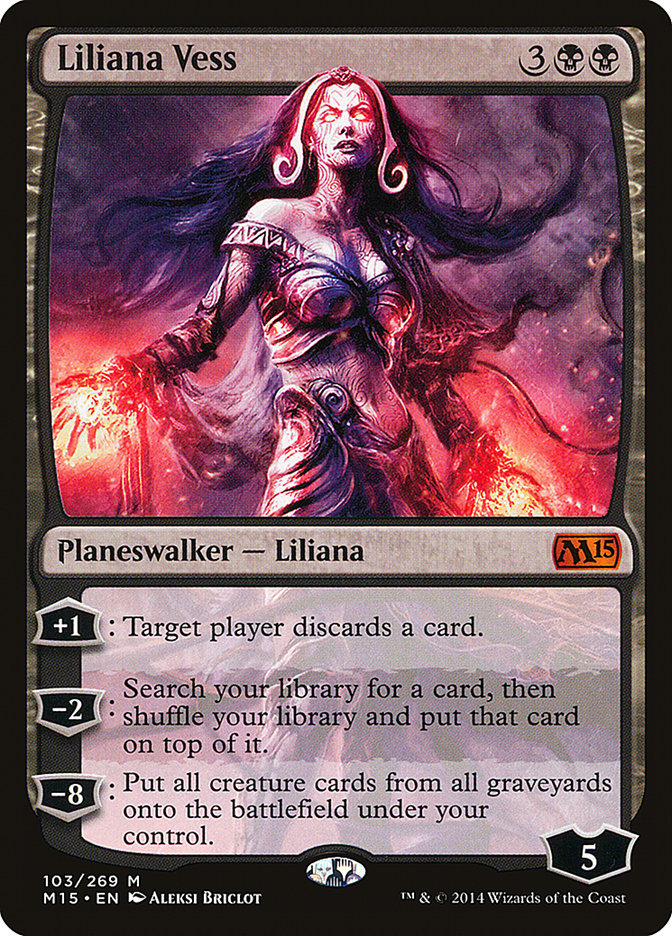I took off from Boston. I made my connection in San Francisco. I landed in Hawaii. My plane wasn’t on fire. It wasn’t 7pm the night before the Pro Tour. I
didn’t almost drown in the ocean and end up naked or spend five hours walking with no water or sunscreen.
Already running above previously set expectations for Hawaii. It can only get better from here, right?
Testing
The first rule we identified about the format was that the two drops sucked. None of them had the ability to compete in the long game. Sylvan Caryatid and
Fleecemane Lion carried over from Block, but there really wasn’t anything new to join them.
Most of our early efforts focused on Seeker of the Way, possibly the only good addition to the above group. From there, we quickly found that Magma Jet and
Lightning Strike were actually the other good two drops in the format as going to the face is always a fine option. In turn, this made Fleecemane Lion and
Seeker of the Way less attractive as they traded for the good two drops. The same applied to Goblin Rabblemaster and Mantis Rider as they traded down,
which was even worse.
The other early realization was that the planeswalkers were just good. We started testing Sarkhan, the Dragonmaster in our Stormbreath Dragon slots and
rapidly began thinking that he was the Flametongue Kavu of the format. Playing an x/4 creature only to see it die to a Sarkhan -3 was miserable, especially
when the resulting 4/4 flying Dragon was miserable to deal with. The same thing applied to planeswalkers, and anything that started at less than five
loyalty after the first activation just died. Note that Sarkhan wasn’t the only source of pressure on the loyalty threshold as Stoke the Flames and Jeskai
Charm also did four damage. Elspeth, Sun’s Champion was just as good as it was in Block Constructed, if not better with Elvish Mystic and Rattleclaw Mystic
as mana accelerant upgrades, and multiple decks were completely unable to beat Nissa, Worldwaker. Sorin, Solemn Visitor was also overperforming in various
Craig Wescoe championed Mardu lists.
The next realization was how the removal of the format worked. Long story short, you had to play black, play End Hostilities, or attack. There were just
too many good four and five drop threats that had no actual answers outside of Hero’s Downfall. Banishing Light was okay, but it opened anyone playing it
up to miserable blowouts on the back of enchantment removal. It was also worth noting that given the above point we were very high on Fated Retribution in
our control decks. A lot of the planeswalkers were good because they entered play, made a creature, and remained in play to continue to generate an
advantage. Without a sweeper, that cleared both halves of the card, control was hard pressed to be able to win a game exchanging two cards for each Elspeth
in a world without Sphinx’s Revelation.
The last pre-Open Series results realization was that every three color manabase needed lifegain to offset the painlands, Mana Confluence, or just the
tempo loss of Temples and tri-lands. Butcher of the Horde was a popular method of this early in our testing, as was Siege Rhino. Sorin, Solemn Visitor
again proved his worth in this category as a way to gain massive amounts of life while doing other things.
We were putting in serious work around this time, but the preferences were rapidly vacillating between options as we made more and more advancement. Bulky
Mardu Aggro gave way to Jeskai Control based around Narset which in turn gave way to a giant set of decks. For reference, here are some highlights of what
we discarded at this point.
-Multiple Mono-Red Aggro decks with under nineteen lands
. One was heroic-based with Satyr Hoplite and Akroan Crusader, the other had Rabblemasters and two drops and Frenized Goblins. Both played Hammerhand. The
flaw here was that the Jeskai matchup was sketchy at best, but the decks generally rolled green midrange game 1 and performed reasonably post-board. Just
don’t play War-Name Aspirant as the card is terrible against Drown in Sorrow or Courser of Kruphix and with Foundry Street Denizen.
-Five Color Temur Ascendancy, courtesy of Conley Woods
. Drawing cards while casting Savage Knuckleblade, Butcher of the Horde, Siege Rhino, and Chromanticore was great, but the Mono-Green Devotion matchup was
unwinnable if they moved towards Arbor Colossus as they should in a room full of Mantis Riders.
–Villainous Wealth ramp decks
. Conley was obviously excited about the card at first glance, but to quote myself he would have been excited about the card even if this was Pro Tour Naya
and you had to cast it by tapping two Wizard’s Schools. I was wrecked by the card in a random game and immediately fell in love with it as Cruel Ultimatum
in the midrange matchups. Unfortunately, a mix of the card costing nine or ten mana to hit Elspeth and Hornet Queen and the fact that the card didn’t
assure life gain to stabilize you from fliers or burn ended up ejecting it from the testing considerations.
–Jeskai Ascendancy with Meletis Astronomer
. I’m actually certain our final maindeck would have been the best for the deck in the event, but I didn’t like its position against Jeskai Aggro, felt
like the Abzan matchup was closer than it was given credit for, often raced the deck with Polukranos draws out of Green Devotion, and just had no idea how
to actually sideboard with the deck.
The dual StarCity Opens were mostly noted by the appearance of Jeskai Aggro, or Jeskai Burn, or Jeskai Wins (whatever the cool kids are calling it these
days). My early testing with Kevin Jones’s list involved cutting the Steam Augury, adding Brimaz, King of Oreskos, trying Tormenting Voice, then
immediately just switching back to his maindeck with three more Mystic Monastery and a third Sarkhan, the Dragonspeaker over the Chandra, Pyromaster. The
deck was good, but it struggled against decks that had Lighting Strikes for its Mantis Riders and Rabblemasters. The transformational sideboard was insane,
but it was no longer as big a deal as people knew about it.
In the week leading up to the Pro Tour, we had a team-wide rush on control decks. Adrian Sullivan managed to beat a lot of people playing a lot of things
with his U/B Perilous Vault list that was very similar to what Owen Turtenwald lost playing for top 8 with. The deck was powerful and blanked a lot of what
people were doing, and spin off U/R, U/W, and Esper lists started to appear, abusing the power of Perilous Vault. The deck played like an old school
Draw-Go deck. Besides the sometimes available Liliana Vess tutor chain of Interpret the Signs into Dig through Time to reveal and draw eight you were very
heavy on resource management and light on Cruel Ultimatum or Sphinx’s Revelation style game breakers.
I quickly dismissed U/R as it had neither Hero’s Downfall or End Hostilities and as a result had to jump through too many hoops to kill 4/4s. The three
color decks had real manabase issues as well. The big one there was that the two color decks got to play gainlands and Radiant Fountain and start games at
23-25 life, while the three color decks did the opposite and started at 17-18 off of painlands. Resolute Archangel was a great lifegain spell, but most of
the time it was just undoing the handicap you set on yourself with your manabase. Add the fact that Perilous Vault did all of the work of End Hostilities
and then some, and there was really no reason in my mind to play the third color.
I was fairly happy with how the U/B list was performing on Wednesday and was figuring out some of the finer details such as win condition splits between
Ashiok, Nightmare Weaver and Prognostic Sphinx, whether there should be a Pearl Lake Ancient almost solely so that I could loop gainlands versus Jeskai
Aggro, and which of Adrian’s eighteen sideboard cards were the right fifteen when Steve Rubin sat down to battle with an updated list of Abzan Midrange. I
had been crushing our stock Chapin-esque Abzan lists, so I gladly humored him.
I was promptly 5-0ed. Frustrated, I looked through his deck and noticed he was just all cards that were good against control. No Bile Blight, no Fleecemane
Lion, no Brimaz, King of Oreskos. I called him out, declared his deck an inbred pile, and immediately grabbed Jeskai Aggro to teach him a lesson about
cutting the low end out of your deck. A quick 4-0 later and I declared I was playing his deck and that it wasn’t remotely close.
Looking back, it just feels so obvious. If the two drops all suck, you aren’t obligated to play them. Just play the good cards up the curve, the two drop
that is actually good, and the best answers.
Regardless, we ended up on the following list:
Creatures (16)
Planeswalkers (7)
Lands (24)
Spells (13)

Looking back, the closest analogue to this deck would be Jund circa Pro Tour San Diego 2010. Great removal, great threats, and once you start winning, the
game ends fast.
The Maindeck
It’s worth noting that with only sixteen creatures, one of the scariest cards against other midrange decks is a joke against you. Ashiok, Nightmare Weaver
only has eight relevant targets to hit: Siege Rhino and Courser of Kruphix. Wingmate Roc costs enough that Ashiok usually has to sacrifice itself to put it
into play without a raid trigger, and the other six creatures just add mana. Given this, over half the time Ashiok +2 straight up bricks, and the rest of
the time you have five removal spells to take it out.
As noted in the top 8, play or draw is very important in this format. The mana accelerants in this deck are some of the rare ways to break through on the
draw and steal the initiative, and on the play they serve to bury your opponents in card advantage engines before they can respond to maintain parity.
There is a definite limit here defined by the maximum amount of mana you can play, the amount of games you want to lose to removal on Elvish Mystic, and
other things like your enters the battlefield tapped lands ratio and how much white or black mana you need. Two Mystics worked fine for me, but they were
boarded out a lot depending on if breaking serve mattered, and I could easily see one or three being right given a larger sample size.
This card is very obviously good, but I want to point how it fits into the general theme of the deck. Every card slot you can possibly make a two for one
is a two for one. Your cards are all powerful enough to force your opponent to play Magic with you, and in the end you turn a corner and a small resource
advantage quickly cascades into a massive one. The only difference between this deck and Jund is that your two for ones are almost all constructive and
build your board state with tokens, additional lands, or draw cards as opposed to something destructive like cascading into Blightning.
When I started testing, I didn’t know if this card was actually better than Polukranos.
Let’s just say pseudo-haste and lifegain are both really dumb.
This card is excellent. It’s Broodmate Dragon for five mana that gains life and dodges Elspeth’s -3.
But it does require you to jump through a hoop. With only ten creatures plus Vampire or Soldier tokens to attack with, supporting additional copies just
isn’t possible. Doing so would require bad cards like…
Siege Rhino is a 4/5. Mono-Green Devotion and Mono-Red Aggro just go around a random creature regardless of how indestructible it is. Control has Perilous
Vault and Aetherspouts that both handle hexproof indestructible creatures.
This card was a joke for me to play against all tournament. The format has changed a lot since Pro Tour Journey Into Nyx, and oddly enough the efficient
threat is the card that was punished this time.
Similar to above. Investing mana into this guy also isn’t an option in a deck trying to curve out two through six a lot of games.
Every planeswalker in this deck has an effect that immediately generates card advantage. This version of Abzan is excellent at clogging up the board,
meaning most of the time your planeswalker has to be answered with an actual removal spell. The best case scenario for your opponent is often getting two
for oned, as the alternative is your planeswalker live and you generate an extra card of value each turn for them to handle.
Starting on four mana with your card advantage engines is a big deal. Sorin is a bit slow at generating cards via Vampire tokens beyond the first two, but
curving right off Sylvan Caryatid and right into Wingmate Roc puts Sorin into a sweet spot on the curve. The lifegain locks some games up on the spot,
while the fact he makes flying tokens helps win planeswalkers fights in the pseudo-mirror. Overall, Sorin isn’t the most obviously powerful planeswalker,
but it plays to the plan and has powerful situational applications that make it an excellent card in this deck and the format.
Some small notes about the card:
-I never used the ultimate on Sorin during the Pro Tour. You are usually too busy making Vampires and killing them to care about an Abyss. The apparent
exception is versus the Czech U/B Control list, which as it was configured couldn’t beat a Sorin Emblem with an opponent at 19 life game 1. Thanks to Dave
Shiels testing for Mike Sigrist for that tidbit.
-It can be reasonable to cast Sorin and try to defend by chumping with the Vampire token just to get another planeswalker into play early. I don’t have a
good metric for when this is right as the one time I did it during the event it was post-Thoughtseize, and I knew he had no way to kill the Vampire.
-When you have Sorin and Wingmate Roc, consider if you should play around Elspeth, Sun’s Champion before +1ing. The pump still applies on your opponent’s
turn too.
This was a forgotten gem of this Standard format. It passed both immediate tests of starting at five loyalty and generating a card of value on the spot. It
was especially brutal in mirror matches as it reverses some standard sizing battles like Couser and Caryatid versus Rhinos and finds your best cards (Roc
and Elspeth) in board stalls.
We actually were deciding where the two Nissas, two Ajanis, and one Liliana would end up all the way through Thursday night. Those five cards would all end
up in the 75, but which two were main and which three were board was a big topic of debate. I was voting for a Liliana Vess over the second Ajani up until
our last hot tub meeting. Nissa, Worldwaker was clearly not right as the card is too variable in value depending on matchup, but Liliana is almost always
good. We ended up determining that a lot of the best Liliana lines were almost strictly post-board options like tutoring up a sweeper, so we stuck with the
more generic option for game ones.
Not much to say here. This card is obviously good and one of the most powerful things to do in the format.
The one cool thing: this deck has a slight shortage of answers to Stormbreath Dragon. Often you are leaning on Elspeth to win that fight, so against
Stormbreath decks you often want to save Elspeth so they don’t just attack it and put it out of -3 range.
A pseudo-planeswalker, this card is just a worse Sorin. It costs a ton of mana to activate, and that doesn’t even generate an actual card of value and even
beyond that is conditional.
We tried a bunch of Hornet Queen + Whip of Erebos decks where the card actually does something, but those decks “didn’t actually beat anything, including
the mirror match.”
The point of Charms is that they do a bunch of things. Each of these things is going to be good some of the time, so the Charm as a whole is good all of
the time.
This card is more. It actually does everything all of the time.
Kill basically any relevant creature in the format? Sure, at instant speed even. It even exiles so random nonsense like Rakshasa Deathdealer or Whip of
Erebos is shut right down. Why not also kill Sarkhan, the Dragonspeaker or counter the -3 on him too? Your opponent doesn’t have creatures? Draw two new
cards. Even the combat trick mode is excellent, and it has a secret fourth mode of pumping your opponent’s creatures into Elspeth -3 range. This last trick
is one of the best answers to an opposing Wingmate Roc.
This card is exceptional, but you can only afford so many removal slots.
There is random nonsense like Whip of Erebos, Jeskai Ascendancy, Banishing Light, and Perilous Vault in this format to mop up. Utter End is the worst true
removal spell in the deck, but it provides necessary versatility.
If the format turns towards a bunch of red midrange decks, this card gets much better as taking out Stormbreath Dragon or multiple big creatures becomes
more relevant, but as of now I would rather have cheaper or more versatile options.
This card is actually just cheating.
One mana is basically free. Two life is almost a payment. The real cost to you is a single card. In exchange, you get perfect information and force your
opponent to mulligan in the worst possible way.
Thanks to whoever printed this the first time. Thanks again to whoever decided it should come back again. I basically owe my Magic playing career to you.
The Mana
Sandsteppe Citadel is great. You are playing spells that costs GG, BB, and WW, and you need to cast them.
The approximate maximum number of tapped lands is nine. You fill in the rest with Temples, as with any thirty mana deck you need ways to make your lands do
work. You need all of your non-fetch duals to make black to cover for Windsweapt Heath skewing your mana the other two directions, and Temple of Malady
casts more early spells than Temple of Silence so it gets the nod. Note that this doesn’t apply the same way to painlands as with the Temples; having them
line up with your early spells matters as you typically want to play them early and follow up on curve.
One last note: the Sixth Edition lands are A) awesome and B) easy to fetch in a deck full of black bordered cards.
The Sideboard
Sideboard sweepers in midrange decks is a traditionally awesome plan. You can play around your own cards, or induce people to overextend to get out around
Siege Rhino. It also solves one of the issues midrange always has, which is recovering tempo.
The split here is a hedge against an unknown metagame. End Hostilities is worse against midrange, but I don’t think you can support three seven drops, and
you want another sweeper against aggro. Mass Calcify doesn’t work in the mirror, but I don’t think you want two Duneblasts there and Mass Calcify versus
Green Devotion lets you keep multiple Rhinos or Rocs and kill them in two attacks before they can rebuild. Duneblast breaks open mirrors, letting you keep
a creature and slam through into their planeswalker to swing almost any board state.
If you want more general removal, this is the best option. Again, tempo. This card lets you regain it by playing two spells a turn in the midgame.
A catch all. Erase is likely better knowing what we know now, but there was fear of Perilous Vaults and the Japanese Chief Engineer + Scuttling Doom Engine
deck going into the event.
Note that shuffling in is definitely not exiling. We actually weren’t boarding this in against McLaren’s control plan where we would have wanted Erase
because putting a Keranos back into his deck would mean he would just find it again with Dig Through Time.
People still play small creatures. This kills them better than any other option. Pharika’s Cure doesn’t kill Mantis Rider, and it never gets you the game
ending two for one on turn 2.
Bile Blight also has a crazy awesome corner case application of targeting your own Sylvan Caryatid to kill theirs.
People still play small creatures. This kills all of them at once and leaves your creatures in play. I’m playing two seven mana Plague Winds, so another
three that cost three mana seems pretty obvious to me.
The single best anti-control threat in the format. It has virtual haste and produces incremental power, giving them almost no time to stop it. Nissa itself
survives End Hostilities, while the animated lands survive Perilous Vault. Aetherspouts is somewhat obnoxious, but you have Thoughtseize which makes that
card look embarrassing.
Beyond just being a powerful planeswalker, this card makes all of your sideboard options significantly more potent. If Liliana resolves, your opponent not
only has it kill it but now has to deal with you drawing your best card on the next turn. There are definitely scenarios where +1-ing Liliana is correct,
like where doing so keeps it alive or takes your opponent’s last card which is a known threat, but most of the time you just immediately -2 as that is
actually more value generated. The fact that you can Vampiric Tutor twice and keep Liliana in play is very good, allowing the card to easily dominate an
empty or paired board.
One card we considered but cut later on in was Empty the Pits. It’s a powerful effect, but getting quadruple black mana is not a lock.
Draft:
This draft format looks so complicated on paper, but in practice it’s absurdly simple. Or maybe it’s just because I was told exactly what to do by two of
the best Limited players of all time.
Lands are better than most cards, because taking lands means you can play the even better cards that people pass to you. Ever see some crazy clan rare
third pick, pack three, sigh, and pass it because there’s no way you can cast it? If you take lands you won’t be that person. There is exactly one common
we had ahead of the common lands in early pick scenarios, and only a small handful of uncommons such as Charms and Murderous Cut are actually better than
tri-lands.
If you get passed lands, great. If you get passed lands and are missing a color of fixing, that happens and be aware of it. If you aren’t getting passed
lands due to being downstream of multiple other people taking lands, move into whatever two color archetype is open based on a few signal cards. There are
a few huge incentive cards you can take early that make forcing a two color archetype reasonable, but if you don’t get these cards early, odds are forcing
that deck is going to lead to a quick 1-2 or 0-3.
The other rule is that attacking sucks and blocking is awesome. They printed a two mana 0/5 with a good ability. Most of the early creatures just trade
off, then the board stalls with bigger creatures. As per above, you need a real incentive to be a two color attacking deck to upset this paradigm. This
also means that removal or general answers for the things that can break stalls is at a premium and should be used sparingly. Even something like Sage-Eye
Harrier that looks bad is actually fine as it blocks flying threats all day long.
We didn’t force five color, the format just made it the best default strategy and the deck that we incidentally built the most.
One note: Gaudenis broke the morph format at this Pro Tour. Sleeve your deck, then unsleeve your morph when you play it facedown. Resleeve when it leaves
play or is flipped face up. There is actually no way to forget to reveal if you do this. Using morph tokens is also okay, but it is almost strictly a worse
way to remind yourself to not get a game loss. I heard about this after round one, used it all event, and had I just used morph reminder tokens would have
almost missed one reveal.
The Event
My first draft started off exactly as planned. I took a Bellowing Saddlebrute out of a mediocre pack, immediately slammed a Sandsteppe Citadel I was passed
with a rare missing, then followed up with a selection of Temur cards and lands including Arc Lightning and Snowhorn Rider. It was clear people on my right
were heavily in B/W Warriors, so I wanted to stick with a base U/G deck and focus my third and fourth colors as necessary.
Then I got a second pick pack two Wingmate Roc with the next best card being a Jungle Hollow. So much for a sane and stable manabase. I picked up
additional white lands this pack to support the Roc, then I filled in my removal and morph slots.
Pack three started off with a Sandsteppe Citadel, and a couple picks in I was gifted with a late Trail of Mystery. And oops, I guess I got a super late
Secret Plans pack two. I struggled to hit enough morphs, but ended up with seven which is the minimum number to make the cards great. I could have taken a
late Abomination of Gudul pack two, but I took an Arrow Storm instead as I thought there was still a chance I would be heavy enough red to want it. That
ended up not being the case as I sideboarded both Arrow Storms I had, though I boarded the card in multiple times as I just wanted more removal.
Round one I drew Wingmate Roc all three games. My opponent was on a U/R Tempo deck, and I was promptly Ice Blast’d and Barrage of Boulder’d out game 1
after casting it and actually just died before it could resolve game 3. He did make a comment about how he was going to lose to the Roc he passed, but
after the match we realized he was two seats to my left.
So, it turns out the player on my left had opened Wingmate Roc pack two and passed it right. He then opened another pack three and passed it left, where it
went straight through the U/R drafters and was taken third pick by Neil Reeves.
Two rounds later I had easily dispatched two opponents with average Abzan decks by casting Wingmate Roc and successfully not gotten paired up against Neil
Reeves, who also 2-1ed on the back of Roc and a bunch of other stellar cards. I was telling the story of the poor soul who passed both Rocs to everyone,
and there were many laughs had at that player’s expense.
Why didn’t they just have the packs in any other order? Sorry kid, it’s not your day.
Except I looked at the standings, and that kid was in the finals of the pod. He ended up losing, but what does it really say when the two people who got
Rocs ended up with the same record as the guy who passed two? Is he just lucky, or is he a stone cold master?
2-1 heading into Constructed.
My first Constructed round had me paired against Ryan Loh playing what appeared to be a stockish Abzan deck game 1. Of course, appeared meant I
Thoughtseized his only relevant spell (Polukranos) and he did nothing and died. It turned out my game 1 assumption was anything but the case, as I lost
game 2 after Thoughtseizing a Hornet Queen when he rattled off See the Unwritten, land Hornet Queen, reveal another See the Unwritten as his next card of
Courser of Kruphix, then reveal another Hornet Queen after drawing the sorcery. After resideboarding, we then played a game very similar to game 1 where I
did everything and he did nothing.
3-1
My next match was against eventual top 8 competitor Lee Shi Tian. This was by far one of the more surreal matches I’ve played in a long time.
First off, I knew from scouting what he was playing. But not my scouting. Not, as far as I know, even from any scouting done by anyone I know.
Between rounds, the one and only Gabe Carleton-Barnes and I were talking at a table when he randomly flipped over a piece of scorepad paper on the table.
Gabe – “This is someone’s scouting notes.”
Me – “Well, adding these to the spreadsheet.”
In perfectly legible handwriting, second on the list, was “Shi Tian Lee – Ascendancy Combo”.
Aside: Thinking more about it, I’m 100% sure it wasn’t anyone on my team as the deck name was not written down as Space Jam. Seriously, look at Jeskai
Ascendancy again and tell me those aren’t the Monstars. They even have the starting five up front and the non-descript bench players in the back. I may
have spent a good two minutes laughing about this exact realization during the event.
So, as a result of this information, I was able to keep a hand of Thoughtseize, Hero’s Downfall, Utter End, four lands. Thoughtseize took Commune with the
Gods, I played Courser of Kruphix on turn 3, and opted for a risky tap out on turn 5 for Ajani, Mentor of Heroes pumping Courser when he had one unknown
card and two lands in hand. The unknown card was Dig Through Time. He cast it, took two cards, drew another, played a Dragon Mantle, attacked Ajani with a
Nissa animated land. I untapped, secure with Utter End and another removal spell up, killed Nissa, and won with an 8/10 Enchantment Centaur.
Between games, Lee had a judge call away from the table as I worked on sideboarding out all of my expensive threats for all of my spot removal.
Game 2 had an auspicious start. I had Sylvan Caryatid on turn 2, but it was off basic lands and I had multiple double black removal spells in hand without
a second source to cast them. On turn 3, he played a Temple, fetched with a Caryatid in play, and I was almost sure he was going to cast Jeskai Ascendancy
and kill me on turn 4.
Except he picked up his deck, looked confused, and called a judge. A judge came over, and he asked for the judge he talked to before in sideboarding. He
stepped away from the table, had a conversation, went back, grabbed his deck, and returned. Five minutes later, he returned with multiple judges.
“The issue has been fixed, no penalty has been assessed. You have a five minute time extension”.
Wait. What issue? He didn’t realize this when he fetched on turn 1? I was completely befuddled, but it didn’t matter as he did nothing the whole game, I
drew more black mana and Siege Rhinos, and eventually the game reached a point where he was at seven life facing down my open mana and two Rhinos. He
played some cantrips and a second Caryatid to provide the toughness required to chump block and live another turn.
Except I had a Caryatid. And a Bile Blight. It probably wasn’t necessary, but that was a real nice way to cap off a victory.
After round 16, I asked what the ruling was. I assumed he had shuffled in some kind of tokens and they had to be removed, but as they were non-cards there
wasn’t an actual issue.
It turns out that game 1, three of his four Ascendancies were in his bottom ten cards. Then again when he fetched on turn 2 game 2. He called the judges to
watch me shuffle. If you watch me on coverage, you will notice I riffle face down on the table much to the dismay of anyone who is a fan of pristine cards
or foils. The end determination by the judges was (paraphrased), “You are either the best shuffle cheater I’ve ever seen, or you are running really hot.”
As many people who know me can attest, I have a history of running unrealistically hot.
4-1
My next two rounds were against Gabriel Nassif on U/B Control and Soo Han Yoon on U/W Control. Both went as scripted.
Game 1 against Nassif I even mulliganed to a virtual five card hand due to a Hero’s Downfall and easily won because I drew two with multiple Abzan Charms,
Thoughtseized his Pearl Lake Ancient, and kept forcing him to two for one my planeswalkers. Game 2 he was overloaded on counters, and I eventually hit his
wall of card draw, but game 3 really showcased the power of Nissa, Worldwaker against Perilous Vault. Rewatch those last turns on the Pro Tour stream if you want to see exactly how good card that card is.
My match against Soo Han Yoon was similar, except the game he had all the counters ended with me resolving Liliana Vess, tutoring twice, and easily running
him out of things while not overextending into what I felt was an obvious Fated Retribution. I also got multiple Banishing Lights with Utter End, which
feels real nice.
6-1
My final round of Day One was to be a pseudo-mirror against Chas Hinkle. Game 1 he blocked Siege Rhino with Courser of Kruphix then end of turn Bile
Blighted my Rhino. I got excited to counter it with Abzan Charm and leave my larger Rhino around to beat him in a planeswalker fight, but was punished by
Wingmate Roc into Wingmate Roc. Had I exiled his Rhino, that wouldn’t have been possible.
Game 2 I got an early planeswalker advantage with Liliana Vess and Ajani, Mentor of Heroes, but I couldn’t find my seventh mana when he found a Wingmate
Roc off Abzan Charm. Looking at my Liliana on eight counters and cards in hand with mana open, Chas opted to attack it out of ultimate range down to two
loyalty. This left me facing down an opponent low on cards and high on 3/4 Birds with me low on life but with plenty of material to work with.
So I made the cool play and ultimated my Ajani up to 111 life and used Liliana to find another sweeper. After a few turns of me failing to do math with
high numbers (oh, I missed six life gain, I guess I’m at 94 not 88) I was able to kill his topdecked Elspeth before it went ultimate, established mine, and
Chas conceded.
By the time game 3 came around, we had expended almost 35 minutes of the round, and I was running out of mental energy. An early Thoughtseize from me
revealed a mana light, threat heavy hand that I stripped the Caryatid out of, but he found his third land and fired off an Anafenza. On my turn I had the
option of Sorin and trying to block the Anafenza with the Vampire token, which would lead into a later Elspeth that would presumably either hold off his
Khan forever or -3 to kill a Rhino and the Abzan mythic, or pass into a mediocrely positioned passive role this game.
To use an Alex John phrase, I decided to “risk it for the biscuit.” I played Sorin, knowing I couldn’t reasonably beat a removal spell off the top and that
a land was also equally bad as he had multiple Rhinos to rattle off. He drew a land, but it was a Temple. I then landed a Sylvan Caryatid, played a Temple
of my own, and crossed my fingers he didn’t find a way to Wingmate Roc me. His scry to the bottom plus Abzan Charm only found another Temple, my Elspeth
cleared his board, and the old Whedon-esque Vampire and Heroine duo easily took over the game.
7-1
And like that, I was in Pod 1. I hadn’t finished Day One at X-1 since my first Pro Tour, and for that Pro Tour the X in that statement meant six wins.
I looked at the pod, and it was going to be tough but not horribly scary. I had a lot of respect for Park Jun Young after he crushed me in the Grand Prix
Atlanta Sunday Super Series with a version of U/W Control that was unbeatable by the Mono-Black Devotion splash Abrupt Decay deck I was testing, Shahar
Shenhar is the reigning World Champion, Mike Sigrist had proved his Limited prowess at Grand Prix DC by beating Yuuya Watanabe in the finals, and Yuuya
was… Yuuya. But I had dodged Alex John and some other X-1s I would rather not play against, so it wasn’t all bad news.
There was another familiar name in the pod: Ondrej Stratsky. Why did I know that name? He was “that kid” who sat to my left in draft one. And passed me a
Wingmate Roc. And then passed another one.
I guess stone cold master it is then.
My draft is available via the Wizards draft viewer for those wanting a more detailed overview
, but I felt like I read it near perfectly and got both lucky and rewarded for the decisions I made. After starting off with an obvious Rattleclaw Mystic,
I saw a Trail of Mystery with an obvious Murderous Cut missing. I slammed it, and the lands and morphs kept coming. I was rewarded with Savage Knuckleblade
and an astronomically late Sandsteppe Citadel from my left, Zurgo, Helmsmasher and Crackling Doom from my right, and three packs with great rares. The
toughest picks of the draft were Flying Crane Technique versus Mardu Charm pick one pack three, which went to the rare finisher as I needed ways to actually
win at that point, then Temur Charm versus Rugged Highlands pack three, which went to the land as I was a bit short on fixing at that point. I ended up
wheeling the Charm, so my pick went from “maturely correct” to “absolutely insane.”
Round one of the draft I dispatched Park Jun Young’s Mardu Warriors deck. Sorin, Solemn Visitor got me game 1, but my more powerful cards won the next two.
It did take me eight of my nine rares to win the last game, but somehow I managed it.
Round two was against Yuuya Watanabe, and he really showed why he is one of the best in the world. He played basically perfectly around everything, only
losing the final game because I drew out of my missing fifth color before he drew out of his missing third. Of course, this let me end the game in style.
Great quotes from friends on the close of that match:
“There is no Yuuya, only Zurgo.” – courtesy of my girlfriend Cassie Martin
“I came here seeking a challenge, and all I found was Yuuya.” – derived from the flavor text of Utter End, via the Boston-area judge crew.
Round three I faced off against a very linear delve deck. Game 1 went as planned, but game 2 I ended up losing when I played to win with Flying Crane
Technique off the top, instead ripped Savage Knuckleblade, and was unable to Abyss him as I had end of turn tapped his Monastery Flock instead of his 5/5
Spirit Warrior token. I ended the game with him at zero cards in hand, one blocker, and six life to my Knuckleblade with me dead to his single flier. Game
3 I reboarded for a grindier game with more card draw, but I instead just played Knuckleblade on turn 4 into Zurgo on turn 5. He didn’t play Dead Drop or
Debilitating Injury on his turn 5, and I had 3-0ed my first Pro Tour draft since Philadelphia in 2011 where Brian Kibler’s Fog deprived me of a 6-0 Limited
record.
10-1 going back to Constructed
I wish I could say I was excited, but I knew five was a lot of rounds to go. Even at X-1, I could easily end up with a middling finish from that point.
Michael Sigrist was my first opponent, and we somehow were the only table not featured of the top four. We spread out, got comfortable, and I was promptly
destroyed. I kept a Temple of Malady, Sylvan Caryatid, five-spell hand on the play game 1 and bricked, and game 2 he had Herald of Torment after my End
Hostilities left us both with basically nothing, and I didn’t have removal or blockers in time to win.
10-2
My next match was against eventual semifinalist Thiago Saporito. This is the only match I honestly have no recollection of. The only thing I remember is
game 3; him attempting to kill my planeswalkers with a monstrous Fleecemane Lion plus End Hostilities and failing, allowing Elspeth to take over the game.
11-2
Finally, back to the feature match arena.
Somehow I had dodged Ondrej Stratsky for two Draft pods, including one where we both 3-0ed due to the mixed 8-0 and 7-1 records in the pod. We met in round
14 for the right to presumably draw into Sunday. The beatdowns were on my side, and I advanced with relative ease.
There was also a car driving around on the fourth floor at some point during this match. I was confused. Rashad was confused. Everyone watching must have
been confused as they could only hear my comment about it and not the car.
12-2
And that was it. There were three of us at 12-2, but both myself and Shaun McLaren had played Mike Sigrist in the Standard portion of the Swiss and would
be paired against each other for sure. A handshake later and I was off to play some Love Letter and see what my teammates needed.
12-2-1
With no teammates to block for and a first or second seed at risk, I offered the second draw with Ivan Floch to put him into his second consecutive Pro
Tour top 8 and lock me on the play for at least the quarter and semifinals. I was .05% in breaks behind McLaren, so even with the draw I still had
reasonable odds to make it up to first seed, which realistically had a slim chance of mattering. What were the odds the McLaren played me in the finals?
Maybe 1/10?
12-2-2
The top 8 announcement had a bit of a hanging tension with it. Yuuya had won his last round to knock Owen out of top 8, but Lee Shi Tian had won as well
and was a heavy favorite to be in eighth place. If I jumped into first place, I’d have to play a worse matchup.
I didn’t, but that meant I had to play Yuuya in a matchup I knew would be tight. I was a favorite, but the Faeries-like nature of the Jeskai Aggro deck was
not to be underestimated. He would play the deck expertly, and I would be in a tough fight to make it to the semifinals.
Quarterfinals
After the top 8 photos and profiles, I ate a quick dinner, determined I had to be rather aggressive game 1 against Yuuya, and went to bed. Overnight, my
team determined that Yuuya’s Prognostic Sphinxes barely mattered as they were too slow and cost double blue and that my game was still to be the aggressive
control deck, boarding in Drown in Sorrow to force him to play at parity on the middle turns where I would dominate.
Game 1 went as planned, with my one land Temple of Malady hand hitting Temple of Malady on the scry and Llanowar Wastes on the subsequent scry. I played
the incorrect card on turn 2 and should have Thoughtseized over Elvish Mystic, but I was fortunately not punished horribly as Yuuya appeared to flood out.
As for game 2…
We originally had a six card sideboard plan, but I knew I didn’t want Unravel the Aether. Answers to answers would leave me dead to Mantis Riders. So I
boarded out cards, took out the Unravel, and found my sideboard at fourteen cards. I looked at my notes, saw Mana Confluence as the last cut, and removed
it from the deck.
Turns out the missing card was…
Which I had the pleasure of revealing to…
I was apparently so busy laughing about it that I missed a scry later as well, but despite putting myself down a card and a half, Yuuya flooded out again
and I was able to make a tough matchup look like an easy win.
Semifinals
I had a brief realization before this match that no matter what, I was locked for Gold. My four Pro Points plus the minimum 22 here plus minimum nine from
the next three Pro Tours was exactly the 35 needed to play another year of Pro Tours, and this season had just started.
Then I was back to Craig Wescoe in Pro Tour San Diego mentality. I still had to win a round of Magic. Achievements can be celebrated after I am told to
stop playing or they run out of opponents to give me.
My teammates were fairly sure I was ahead in the matchup, but I wanted to be careful. I could still lose two games to specific draws, and knowing things
like “I have to cut his access to raid on Wingmate Roc early” would be key to victory. I boarded in a couple Bile Blights on the draw to ensure Thiago
couldn’t establish multiple creatures to prevent me from doing this, but besides that, it was just Wraths in, work out some number of Elvish Mystic, Sorin,
and Thoughtseize out as the lowest impact cards and worst lategame draws. For the record, Sorin would be amazing in a 75 card mirror for me, but Thiago was
not nearly as planeswalker-focused and the flying attacker was significantly less relevant as a result.
Game 1 looked about exactly as textbook as possible for this matchup. I fell behind early, trading some life for positioning, and took over with my more
powerful cards. Game 2 he ran over a clunky mulligan that I felt was better than a five, while game 3 came down to the wire. While I was certainly a large
favorite going into the empty board state, I should have played another land on the turn before he played End Hostilities so that I could kill a ripped
Fleecemane Lion in response to monstrosity and prevent myself from losing to runner that into End Hostilities, but the way it ended was…. acceptable.
Finals
And the epic conclusion.
I had five minutes to get my team’s input, and then it was off to the arena. Long story short, we had tested this a ton before the Pro Tour. All of our
Jeskai lists had End Hostilities, though with a couple less Dig Through Time to back it up. Bile Bligh is in as you need to kill Mantis Rider. Most of your
expensive planeswalkers come out.
Game 1 I had all of the things I ever wanted besides a Sylvan Caryatid while McLaren’s manabase failed him. I have no idea why I waited on that Hero’s
Downfall, but it didn’t matter because Siege Rhino is the king of the format. I remember thinking I wanted to scry into early action, saw a Siege Rhino,
and just said “Well, or I’ll just kill him today.”
Game 2 I’m still unsure on my mulligan. It was a terrible hand against a Rabblemaster, but if he has any other draw I felt like it was fine. I guess my
thought at the time was that a six could easily be better, but it turned out easily worse. I also could have gained more life off a second Courser instead
of playing the Elvish Mystic, but with no way to kill Mantis Rider at the time, I wanted to ramp up to my five drops. Once I played the Caves of Kolios
from my deck my line was locked in, and revealing the Bile Blight was unfortunate. Shaun won with about a million cards in hand though, so odds are I was
dead regardless of how I played.
Game 3 was yet again Siege Rhino’s time to shine. I also was very amused that I ended up beating McLaren with Ajani, Mentor of Heroes after he defeated Jacob Wilson with Ajani
Vengeant at Pro Tour Born of the Gods.
Unknown to me and extremely appropriate given Shaun’s “Make waaaaaaay for Prince Ajani”, my teammates started a chorus of “Circle
of Life” in the next room over. Steve Rubin had been singing that song every time he cast Ajani, Fleecemane Lion, or Brimaz, King of Oreskos in testing. He
also would sing Hornet Queen to the tune of Abba’s Dancing Queen, though the lyrics there are still in flux. Personally, I think that Brimaz is more of a
“Just Can’t Wait to be King” kind of guy, but the details don’t matter as much there.
In retrospect, I played game 4 horribly. I should have Roc’ed way early, but I was afraid of opening myself up to damage from a Mantis Rider plus counter.
He was on all burn, I ripped a Siege Rhino, and it came down to that one turn.
Everyone asked me how nerve-wracking it was to sit there and not know. If anything, it was just the opposite. There was the brief second before he peeked
where I was waiting, and then as soon as he put it back down and lightly smiled, I knew it was over. When he picked it up, I heard the cheer from the other
room.
I had a full two minutes to sit there and enjoy knowing that I would be a Pro Tour Champion before he played Mantis Rider, and I revealed the Abzan Charms.
When I scripted this, it was me drawing the lethal spell and asking for a minute to soak it in before slamming it. It’s very unlikely that I would do this
to (almost) anyone in a real match, but I’m glad I was not given the opportunity to fall to temptation yet still had the moment I was looking for.
The Aftermath
While browsing for references for this article,
I came across the following quote from Shaun eight months ago in his champion’s report.
Apologies for the incidental, unintended daggers Shaun, I hope/expect to see you at Worlds next year.
“It still hasn’t fully hit me. But every so often I drift off to a thought like “Hmm, I get to play at Worlds” and snap out of it with a gigantic grin on
my face.”
I still don’t really know what “fully hit me” even means yet though. Maybe it will change, but here is what I know for now.
At multiple points this weekend I was more excited for Steve Rubin winning his last match to 11-5 and qualifying for the next Pro Tour or Andrew Shrout
winning his Magic Online PTQ than I was for whatever I had just done half an hour before. After winning the Pro Tour, my reaction during all the interviews
was “This is a thing I’ve done. That’s kinda cool.” In my mind, there wasn’t really any more exuberance than any other non-match air time I’ve had.
I think I put it all together when I was having the stereotypical “What do I do now that I’ve hit this milestone?” moment after the event.
I play Magic because I like winning.
Not having won. Winning.
So I guess I’ll keep doing that.

